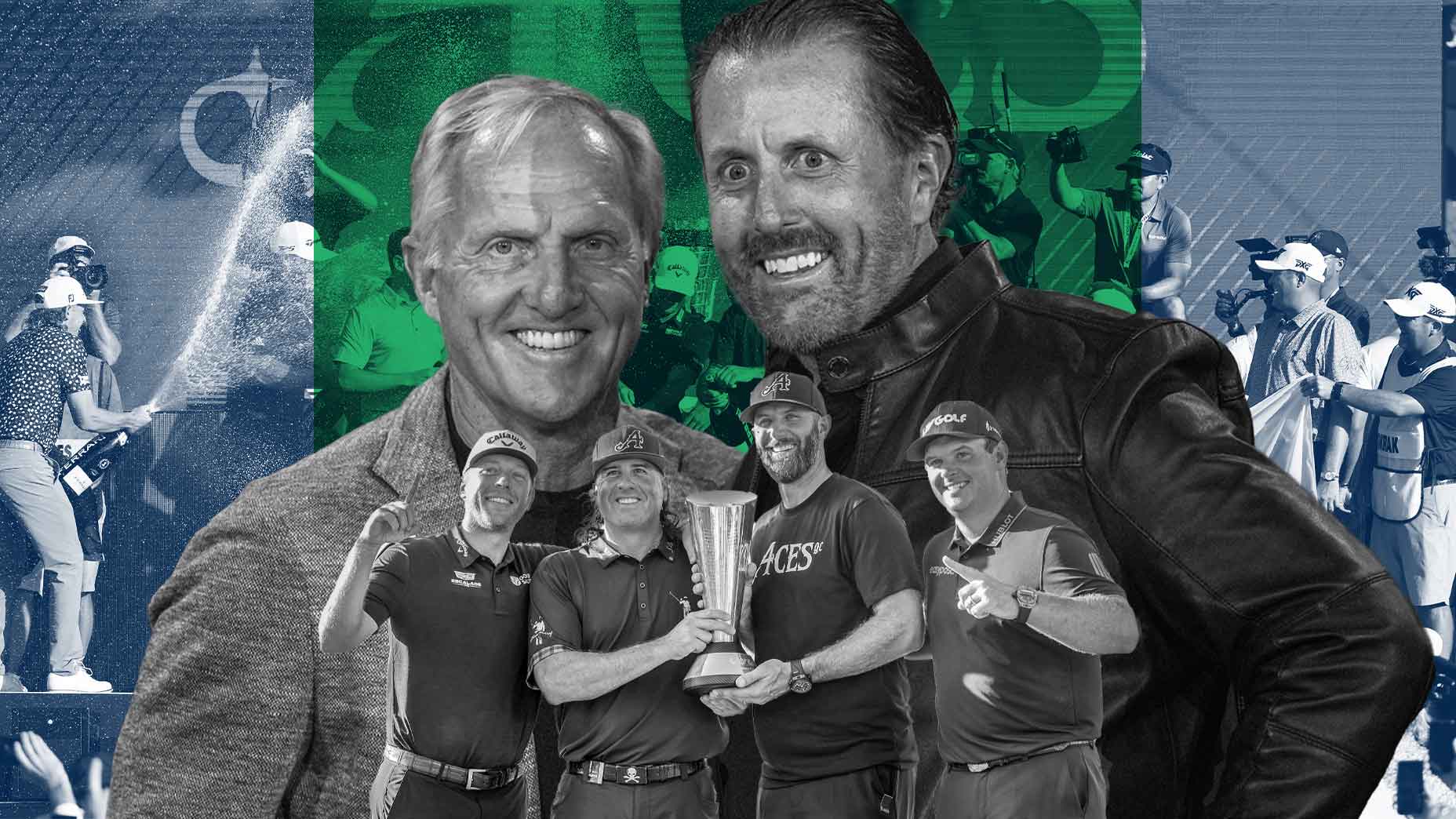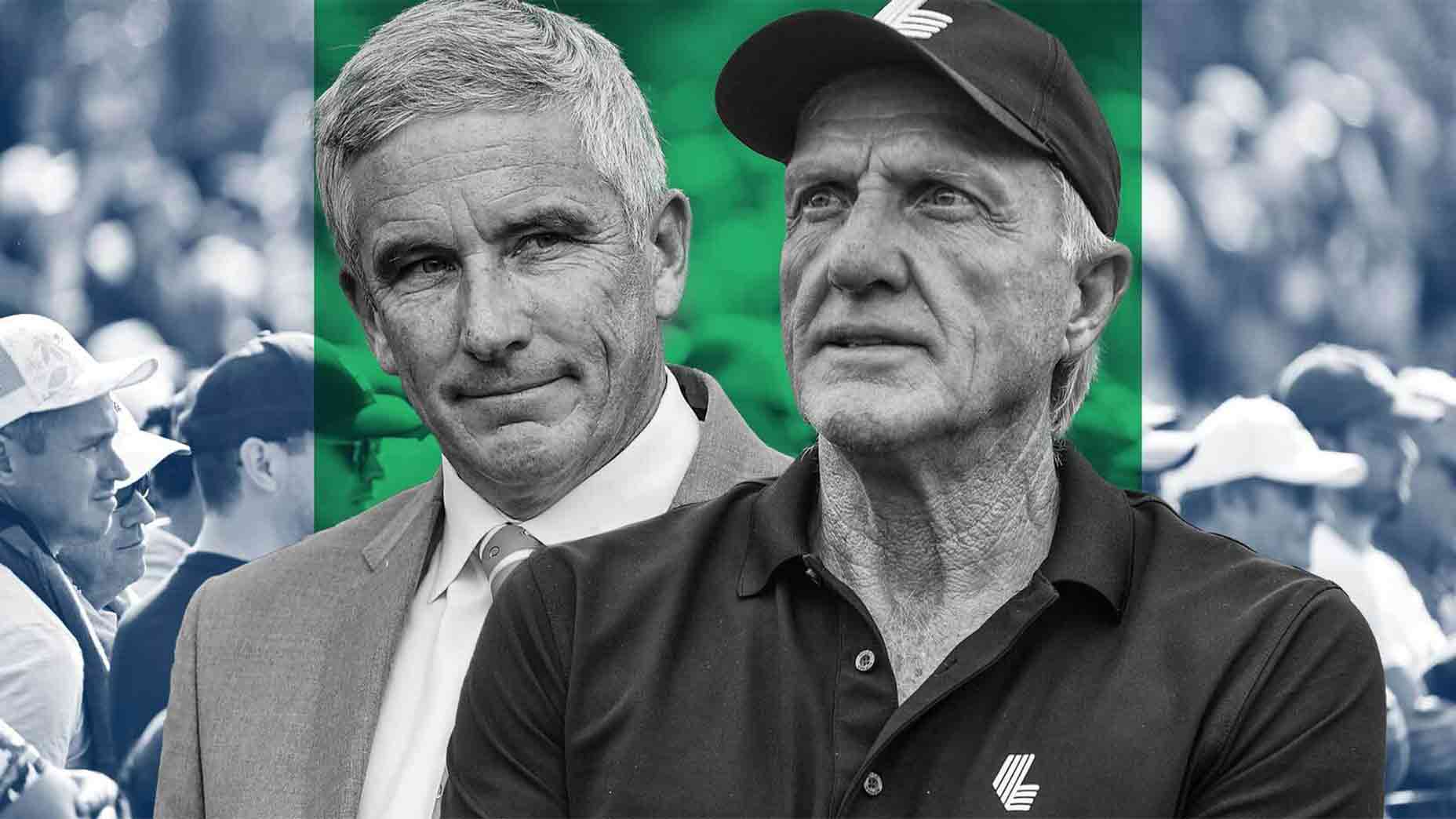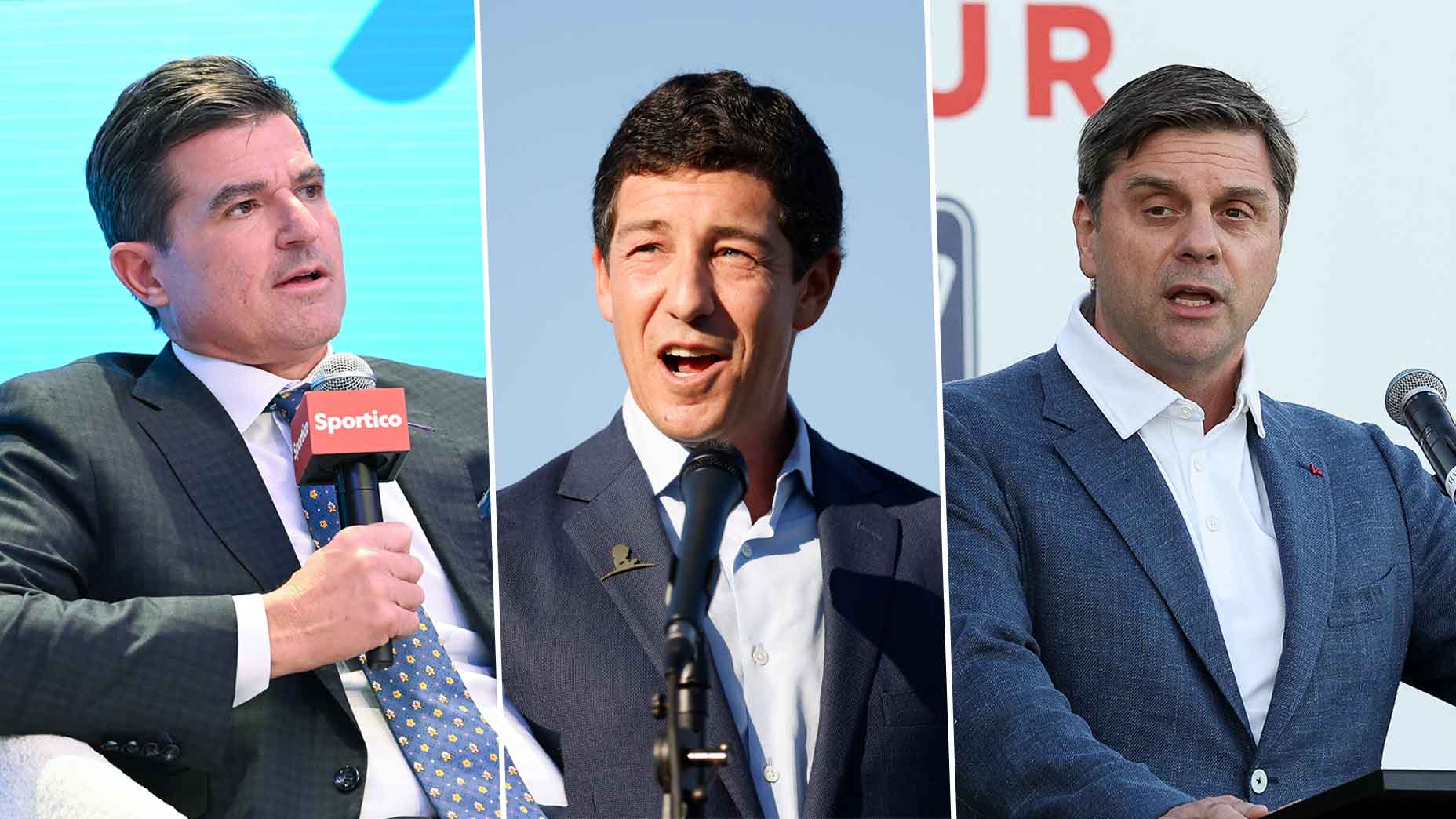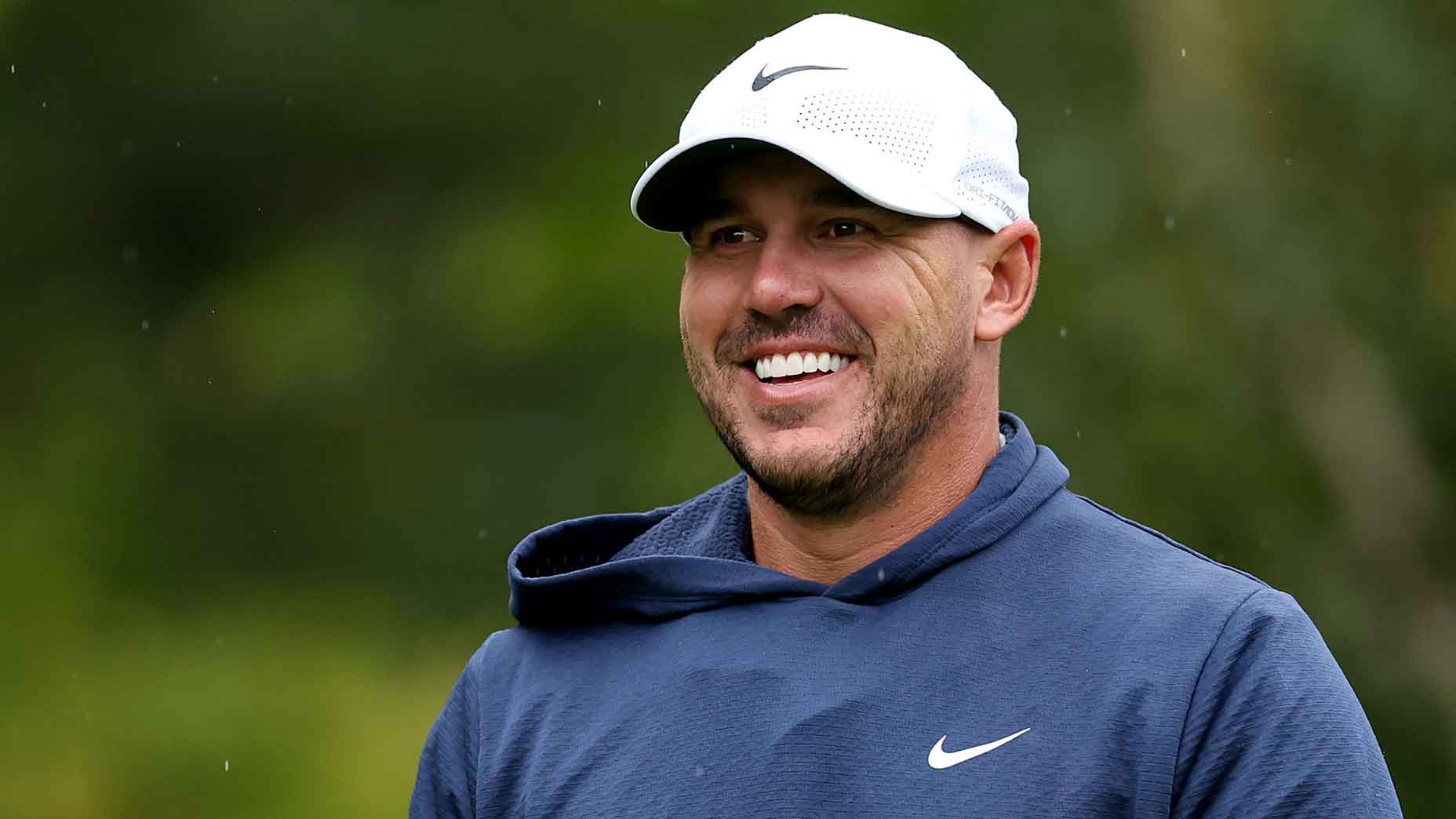This year was unquestionably, undeniably, irredeemably the craziest in golf history. Or was it?
Yes, we saw more in 2022 than we have seen in the sport in a very long while: a revolution, a once-in-a-generation player movement, an astonishingly wide-open war, an impossibly historic final walk … and a few billion dollars in petty cash. But before recency bias anoints 2022 golf’s craziest year on record, let us first consider the alternatives.
Golf’s first truly wild year came in 1860, when a Scot by the name of James Ogilvie Fairlie coaxed the membership at his club, Prestwick, to form a golf competition. The competition, in Fairlie’s image, would welcome golfers from all over the commonwealth to crown a successor to the world’s greatest golfer, the late Allan Robertson. The winner of that competition would earn the title of “Champion Golfer,” winning a red leather “Challenge Belt” worth an estimated £25. Eight golfers competed in the competition, which was eventually won by another Scot named Willie Park Sr.
LIV Golf arrived via cannonball. 2022 was never the sameBy: Sean Zak
In truth, none of the men involved knew quite how momentous 1860 would prove to be for golf. Little did they realize, they’d created the Open Championship, the oldest and first of golf’s four “major championships.”
That year would exist as golf’s wildest for quite a while — half a century, at least — until a teenager from the Boston suburbs stunned a slightly more-defined golf world at the 1913 U.S. Open. Francis Ouimet’s victory in the “greatest game ever played” sent shockwaves through a changing golf world, and rewrote the perception of amateur golfers well beyond Brookline, Mass.
But then came along 1932, when golf’s greatest player (Bobby Jones) and a business partner named Clifford Roberts elected to form a tournament on the course they’d built upon a fruit farm just outside of Atlanta. The “Augusta National Invitation Tournament” was birthed, bringing the first tradition to what would one day be called “unlike any other.” A short while later, Roberts won out on a yearslong argument with Jones and gave his club’s tournament the name he had long envisioned: “the Masters.”
It would take years for the Masters to earn its current place on golf’s mantel, long enough for the shape of pro golf as we knew it to change dramatically. That came first in 1950, when 13 historic women formed the sport’s first women’s professional tour, the LPGA, and it continued again in 1968, when members of the men’s Professional Golf Association rebelled against the establishment to form a new body called the PGA Tour.
The inside story of how LIV Golf vs. the PGA Tour beganBy: Dylan Dethier
The PGA and LPGA Tours would come to house nearly all of golf’s superstars, but they would struggle to bring those faces to the masses in the same way as their other professional sports siblings. That was until 2001, when a supernova named Tiger Woods completed the “Tiger Slam” — winning all four majors consecutively — singlehandedly changing the finances of the sport forever.
Well, almost forever. It took another two decades for another catalyst to change golf’s bottom line as we knew it, but this time, the sport’s bank accounts weren’t all that changed.
First, 2022 brought us the downfall of a long-time superstar, Phil Mickelson, whose explosive comments to biographer (and golf journalist) Alan Shipnuck set off the domino effect that resulted in his disappearance from professional golf. Then came LIV’s first strike, a coordinated effort that brought about the defections of a wave of well-known veterans and payments totaling several hundred million from the league’s controversial financiers, the Saudi Public Investment Fund. Then came the league’s first tournament, and more defections. Then the U.S. Open, and more still.
By the time the sport returned to the Home of Golf for the 150th Open, the roof was on fire. The PGA Tour was losing talent daily, and the sport’s once-tame rumor mill had spun off its hinges. Every night brought a new set of whispers, and every morning a new public relations statement.
damn. pic.twitter.com/FBVyewHeBa
— James Colgan (@jamescolgan26) July 15, 2022
In St. Andrews, Tiger Woods attempted to extinguish the flames with C4, blasting the new league, its players, and what he saw as a violation of golf’s fundamental truths in a pre-tournament press conference. Later that weekend, he limped to a memorable second-round exit while Cam Smith — who would soon become LIV’s highest-ranked acquisition — stole his first major championship from golf poster child Rory McIlroy.
The PGA Tour had begun to buckle by the end of August, the final week of its regular season. Player losses weren’t just mounting, they were growing. Each week, players of greater significance were signing on with LIV. An ugly courtroom battle was in its earliest stages. LIV was gaining momentum.
But then came something stunning: a players-only meeting much in the shape of the one that created the PGA Tour a half-century earlier. The group was summoned by Tiger Woods — who flew in on his private jet for the occasion — and consisted of the lion’s share of the top 15 players in the world. When the meeting was over, a new PGA Tour had been created, one with limited-field “elevated events,” increased prize-money payouts, and greater incentives for the game’s best players. The changes, LIV proponents noted, looked an awful lot like the ones implemented by LIV just a few months earlier. But they also maintained the spirit of the PGA Tour and its traditions, and came without any of the baggage tied to LIV’s controversial financiers.
As the winter months quickly approached, the sport quieted some in the “offseason.” There were a handful of Tiger sightings — including some encouraging developments in his golf game — as well as a new batch of LIV Golf rumors, but the tectonic-shifting developments of months past were long gone.
As Woods approached his final start of the year at the PNC Championship, though, he began to ponder the possibility that 2022 had affected his legacy more than any year in recent memory.
“Yes … yeah,” he said. “The golf ecosystem has forced everybody to rethink how we look at the game and how we need to make the game better. So this whole year, for all of us who have been a part of golf, we’ve had to look at it from a different lens.”
Perhaps he wasn’t alone.












